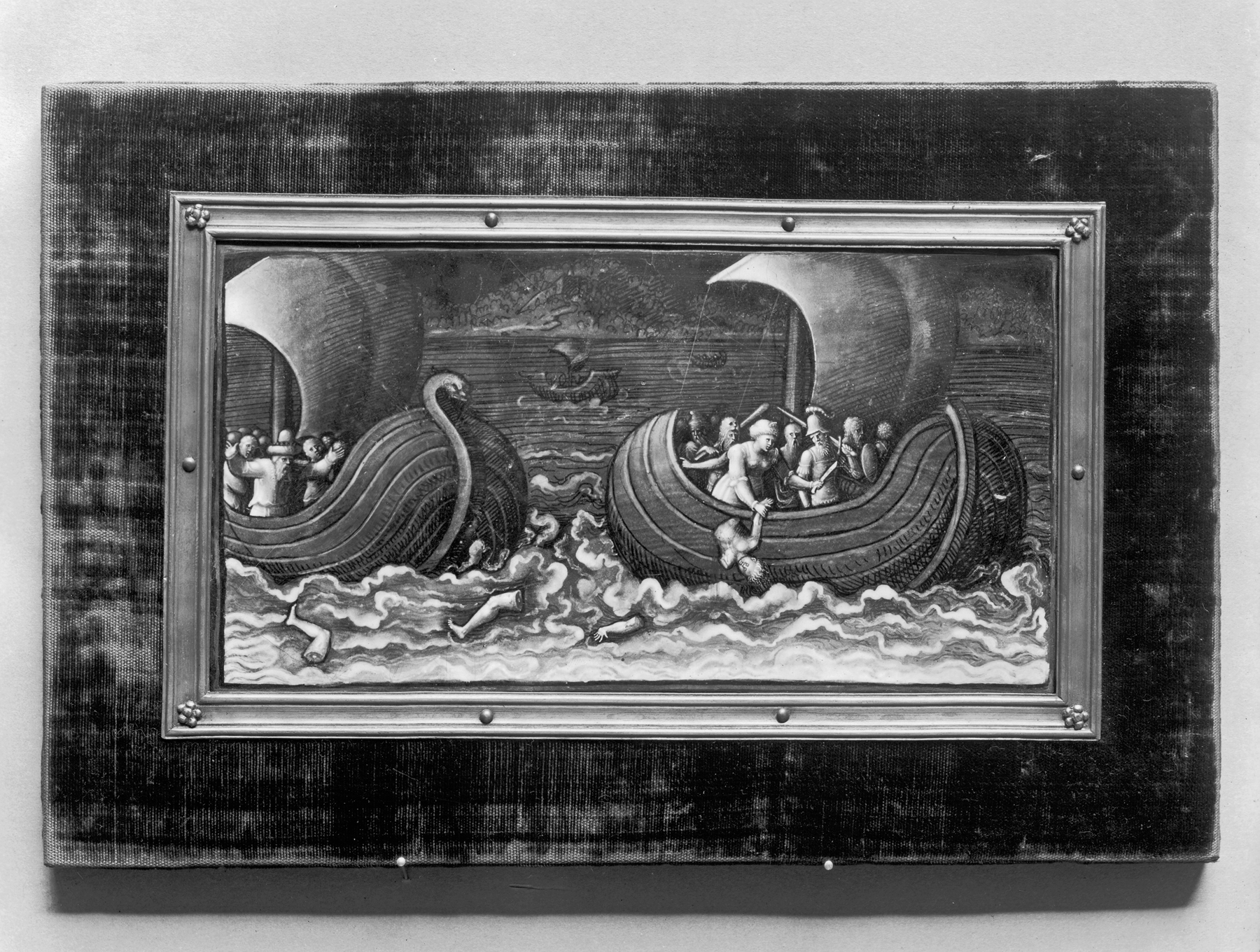Plaque with Medea's Murder of Absyrtus
(Renaissance Europe )
Probably from a series decorating a casket, this plaque, painted in "grisaille," depicts a gruesome episode in the story of Medea, told by the Roman writer Ovid (43 BC-AD 17) in "The Metamorphoses". Jason and Medea are escaping by ship from the fleet of King Aietes of Chalcis, Medea's father. In order to slow their pursuers, Medea kills her brother Absyrtus, dismembers his body, and casts it piece by piece into the sea, knowing that her father will seek to retrieve each body part. The designs were inspired by engravings by René Boyvin (ca. 1525-after 1580) after drawings by the Flemish painter and designer Leonard Thiry (ca. 1500-after 1565).
Provenance
Provenance (from the French provenir, 'to come from/forth') is the chronology of the ownership, custody, or location of a historical object. Learn more about provenance at the Walters.
Jacques Seligmann, Paris [date and mode of acquisition unknown]; Henry Walters, Baltimore [date and mode of acquisition unknown]; Walters Art Museum, 1931, by bequest.
Geographies
France, Limoges (Place of Origin)
Measurements
H: 4 1/8 x W: 7 13/16 in. (10.5 x 19.8 cm)
Credit Line
Acquired by Henry Walters
Location in Museum
Accession Number
In libraries, galleries, museums, and archives, an accession number is a unique identifier assigned to each object in the collection.
In libraries, galleries, museums, and archives, an accession number is a unique identifier assigned to each object in the collection.
44.281


